Pace of House Price Inflation in Toronto and Vancouver to Return to Earth in 2016
Posted by Steve Harmer on Thursday, January 14th, 2016 at 1:02pm.
Canada’s Housing Market Posts Strong Growth in Fourth Quarter Led By Gains in Country’s Largest Markets
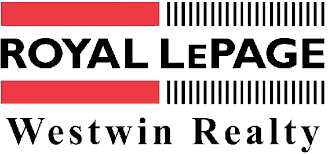 TORONTO, January 13, 2016 – Canada’s residential real estate market showed strong growth in the fourth quarter of 2015, led by hot Vancouver and Toronto markets according to the Royal LePage House Price Survey and Market Survey Forecast released today. Looking forward to 2016, Royal LePage expects continued price increases in most markets, but not at the pace that has been the recent norm. Instead, the national real estate market is expected to slow later this year, principally due to the effects of a dampened economy in Western Canada and eroding affordability in Toronto and Vancouver.
TORONTO, January 13, 2016 – Canada’s residential real estate market showed strong growth in the fourth quarter of 2015, led by hot Vancouver and Toronto markets according to the Royal LePage House Price Survey and Market Survey Forecast released today. Looking forward to 2016, Royal LePage expects continued price increases in most markets, but not at the pace that has been the recent norm. Instead, the national real estate market is expected to slow later this year, principally due to the effects of a dampened economy in Western Canada and eroding affordability in Toronto and Vancouver.
According to the Royal LePage National House Price Composite, compiled from proprietary property value data in 53 of the nation’s largest real estate markets, the price of a home in Canada increased 6.5 per cent year-over-year to $500,688 in the fourth quarter. The price of a two-storey home rose 7.7 per cent year-over-year to $610,134, and the price of a bungalow increased 5.4 per cent to $420,082. During the same period, the price of a condominium increased 3.1 per cent to $341,448. Looking ahead to 2016, Royal LePage forecasts that the aggregate price of a home in Canada will increase 4.1 per cent for the full year when compared to 2015.
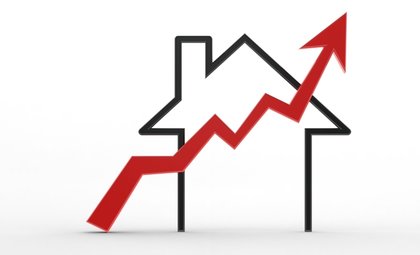 “The frenetic pace of our country’s largest housing markets should moderate throughout the year ahead,” said Phil Soper, president and chief executive officer, Royal LePage. “While most of the country will continue to see house value appreciation in 2016, we expect that the pace of price increases in Greater Vancouver and the Greater Toronto Area – where real estate appreciation has significantly outpaced job and wage growth – will settle to a more sustainable, single-digit price increase trajectory.
“The frenetic pace of our country’s largest housing markets should moderate throughout the year ahead,” said Phil Soper, president and chief executive officer, Royal LePage. “While most of the country will continue to see house value appreciation in 2016, we expect that the pace of price increases in Greater Vancouver and the Greater Toronto Area – where real estate appreciation has significantly outpaced job and wage growth – will settle to a more sustainable, single-digit price increase trajectory.
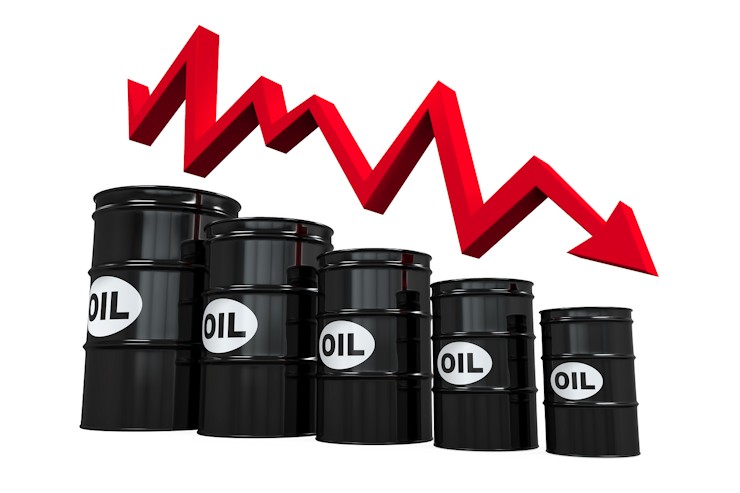 “Through the recent period of depressed oil prices, property prices in Canada’s energy-centric regions, particularly Alberta and Newfoundland and Labrador, were more resilient than most onlookers had expected,” continued Soper. “Consumers, reluctant to sell their homes at what they perceived to be a discount to their true value, simply withdrew from the market, resulting in steady house prices and a drop in unit sales volume. In the coming year we expect to see the delayed impacts of the slowing economy and rising unemployment on the regions’ housing stock, with moderate declines in home values. In cities like Calgary, it is critical that homeowners seek the guidance of a real estate professional to price homes accurately to local market conditions, or the property will not sell.”
“Through the recent period of depressed oil prices, property prices in Canada’s energy-centric regions, particularly Alberta and Newfoundland and Labrador, were more resilient than most onlookers had expected,” continued Soper. “Consumers, reluctant to sell their homes at what they perceived to be a discount to their true value, simply withdrew from the market, resulting in steady house prices and a drop in unit sales volume. In the coming year we expect to see the delayed impacts of the slowing economy and rising unemployment on the regions’ housing stock, with moderate declines in home values. In cities like Calgary, it is critical that homeowners seek the guidance of a real estate professional to price homes accurately to local market conditions, or the property will not sell.”
In Quebec, home prices were relatively flat during 2015. A lower Canadian dollar and U.S. economic growth should fuel service and manufacturing sector dynamism in 2016, improving employment levels and consumer confidence, and providing a lift to home prices.
“Montreal’s slow-growing real estate market is expected to be much more vigorous in 2016,” said Soper. “A recent economic opportunity study[4] pointed to Montreal as Canada’s third ‘city to watch’ in 2016, just behind Vancouver and Toronto in growth potential.”
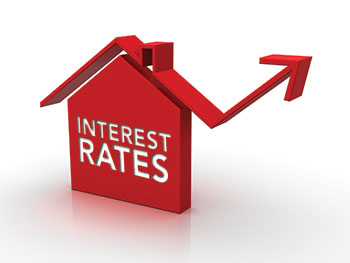 In 2016, Royal LePage expects the price of residential real estate in Canada to be more heavily influenced by macroeconomic factors than by housing-specific variables such as tighter regulation in the mortgage industry. The Bank of Canada is expected to keep its overnight rate steady through the all-important spring market, extending the prolonged period of exceptionally low borrowing rates. While the new Federal Minister of Finance kicked off his appointment with a hike to 10 per cent in the minimum down payment required for the portion of mortgage insurance over $500,000, Royal LePage expects this change to have a marginal effect on the overall market.
In 2016, Royal LePage expects the price of residential real estate in Canada to be more heavily influenced by macroeconomic factors than by housing-specific variables such as tighter regulation in the mortgage industry. The Bank of Canada is expected to keep its overnight rate steady through the all-important spring market, extending the prolonged period of exceptionally low borrowing rates. While the new Federal Minister of Finance kicked off his appointment with a hike to 10 per cent in the minimum down payment required for the portion of mortgage insurance over $500,000, Royal LePage expects this change to have a marginal effect on the overall market.
“The new federal government moved quickly with a policy change in the minimum down payment required to secure mortgage insurance,” said Soper. “The clever public policy argument here is that the government-backed program, provided primarily as assistance to the first-time homebuyer, should be more expensive for people insuring very large mortgages. The change will produce an added benefit akin to a slight tap on the brake for our two most costly cities. On a nationwide basis, we expect the number of transactions that this will impact to be minimal – significantly less than the initial industry reaction would lead consumers to believe.”
 The global economic picture continues to be uneven. For the most part, forecasters such as the International Monetary Fund expect worldwide growth in 2016 to be close to the modest levels attained in 2015. Asia remains a wildcard as evidenced by the recent gyrations in China’s stock markets. If China’s economy, the world’s second largest, continues to sputter, Canada’s second largest export market could reduce the quantity of goods and services that they are willing to purchase, creating drag on our economy.
The global economic picture continues to be uneven. For the most part, forecasters such as the International Monetary Fund expect worldwide growth in 2016 to be close to the modest levels attained in 2015. Asia remains a wildcard as evidenced by the recent gyrations in China’s stock markets. If China’s economy, the world’s second largest, continues to sputter, Canada’s second largest export market could reduce the quantity of goods and services that they are willing to purchase, creating drag on our economy.
Offsetting the dampening effects of a troubled global economy and oil price declines, the economic rebound and hiring surge in America presents a meaningful opportunity for Canadian export growth. For Canada, export volumes to the U.S. are twenty-times larger than export volumes to China. Combined with the relatively weak Canadian dollar which makes the country’s goods and services more attractive to foreign buyers, Royal LePage expects to see expanding export activity in Ontario, British Columbia, Quebec and Manitoba.
 In the manufacturing sector, a recent report from Export Development Canada noted that exporters will ride the wave of surging demand in the U.S., as evidenced by vehicle sales climbing above pre-recession levels.
In the manufacturing sector, a recent report from Export Development Canada noted that exporters will ride the wave of surging demand in the U.S., as evidenced by vehicle sales climbing above pre-recession levels.
“Canada will benefit more than any other country in the world from the ‘made in America’ recovery underway south of the border. It took seven long years, but the incredible U.S. jobs creation machine is finally running at full tilt, and those newly confident people want what we have to offer. Growing exports mean more jobs at home, and by extension, stronger Canadian consumer confidence. Combined with continued low interest rates, the country’s housing market is in a solid position to weather the impact of low commodity prices and a choppy domestic economy,” concluded Soper.
Regional Market Summaries
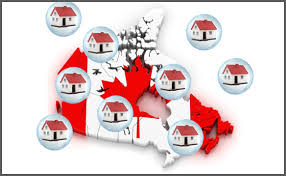 The St. John’s housing market saw some softness in the fourth quarter of 2015, with the aggregate price of a home in the region declining 1.0 per cent year-over-year to $337,291. The median price of a two-storey home fell 0.8 per cent year-over-year to $385,123, while the price of a bungalow declined 1.5 per cent to $310,704. During the same period, condominium prices remained relatively flat, gaining 0.8 per cent year-over-year to $299,718.
The St. John’s housing market saw some softness in the fourth quarter of 2015, with the aggregate price of a home in the region declining 1.0 per cent year-over-year to $337,291. The median price of a two-storey home fell 0.8 per cent year-over-year to $385,123, while the price of a bungalow declined 1.5 per cent to $310,704. During the same period, condominium prices remained relatively flat, gaining 0.8 per cent year-over-year to $299,718.
During the same period, the aggregate price of a home in Halifax increased 2.2 per cent year-over-year to $305,688. The median price for a bungalow remained relatively flat, rising 0.2 per cent year-over-year to $236,503. Two-storey homes saw an increase of 2.6 per cent to $346,435, while the median price of condominiums saw a healthy increase of 4.8 per cent to $300,184. Looking ahead, Royal LePage forecasts that the aggregate price of a home in Halifax will see a moderate increase of 2.5 per cent in 2016.
In the Greater Montreal Area, the housing market saw moderate growth with the aggregate price of a home in the region, rising 2.3 per cent to $340,207. The median price for a bungalow saw a moderate 2.0 per cent year-over-year increase to $281,154, while two-storey homes saw a 3.3 per cent increase to $435,586. The median price of condominiums remained relatively flat, rising 0.4 per cent to $283,050. Royal LePage predicts that properties in the Greater Montreal Area will see a 1.8 per cent price increase in 2016.
During the fourth quarter of 2015, the aggregate price of a home in Ottawa saw moderate growth, rising 2.8 per cent year-over-year to $390,948. Two-storey homes saw a healthy increase in the median price of 4.7 per cent to $412,196, while condominiums remained relatively flat, rising 0.5 per cent to $311,633. During the same period, the median price for a bungalow saw a decrease of 2.2 per cent to $370,356. For the balance of 2016, Royal LePage forecasts that the aggregate price will see an increase of 2.5 per cent.
Home prices continued to show significant increases in the Greater Toronto Area as the region experiences a prolonged inventory shortage, with the aggregate price of a home rising 8.6 per cent over the previous year to $605,898. The median price for a two-storey home rose 9.7 per cent year-over-year to $715,525, followed closely by bungalows which increased 7.8 per cent to $596,842. Condominiums also saw healthy price growth during the quarter, increasing 3.7 per cent to a median price of $361,809. Royal LePage forecasts that prices in central Toronto will continue to rise, predicting 5.5 per cent year-over-year growth across housing categories during 2016.
The housing market in Winnipeg remained relatively stable, as the aggregate price of a home saw a modest increase of 1.2 per cent year-over-year to $292,316. The median price of a bungalow rose 2.6 per cent to $269,675. During the same period, the median price of a two-storey home decreased slightly by 0.2 per cent to $351,060, while condominium prices decreased by 3.9 per cent to $217,174. Royal LePage forecasts that the price of a home in Winnipeg will increase 1.9 per cent during 2016.
High inventory levels in Regina’s housing market have caused a modest decline in the aggregate price of 1.4 per cent year-over-year to $321,139, in the fourth quarter of 2015. The median price of a two-storey home remained relatively flat, rising to $416,824. The price of bungalows remained steady with a very slight decline of 0.7 per cent to $297,660, while condominiums declined 12.5 per cent year-over-year to a median price of $238,789. Looking ahead, Royal LePage forecasts an increase of 1.0 per cent for the full year in 2016.
Despite a challenging economic environment, Calgary home prices remained stable during the fourth quarter of 2015, rising 0.3 per cent yearoveryear to $459,809. The median price of a two-storey home rose 0.7 per cent to $514,935, while bungalows saw a decrease of 0.1 per cent year-over-year to $452,038. During the same period, condominium prices saw some softness, declining 1.2 per cent to $300,714. Looking forward to 2016, Royal LePage forecasts a year-over-year price decrease of 3.0 per cent in the aggregate price of a home in the Calgary region.
Currently in a balanced market, Edmonton saw a modest increase in the aggregate price, rising 1.6 per cent year-over-year to $380,502, in the fourth quarter. The median price of a two-storey home remained steady with an increase of 3.2 per cent to $454,036. The price of bungalows saw modest growth of 0.2 per cent to $366,704, while the median price of condominiums declined 1.9 per cent to $232,389. Royal LePage forecasts that the Edmonton housing market will see a moderate decline of 2 per cent in home prices by year-end 2016.
Home prices in Greater Vancouver rose significantly during the fourth quarter of 2015, with the aggregate price of a home in the region increasing 12.4 per cent yearover-year to $949,468. The median price for bungalows in Greater Vancouver surged 16.8 per cent year-over-year to $1,025,604, while two-storey homes climbed 12.2 per cent to $1,259,289. Condominiums also saw strong price growth during the quarter, increasing 7.2 per cent to $476,213. Looking ahead to 2016, Royal LePage forecasts that the aggregate home price in Vancouver will rise by 9.0 per cent year-over-year, with detached homes expected to continue outpacing condominiums.
© http://www.royallepage.ca/realestate/news/pace-of-house-price-inflation-in-toronto-and-vancouver-to-return-to-earth-in-2016/#.VpgMxVKP9kd
